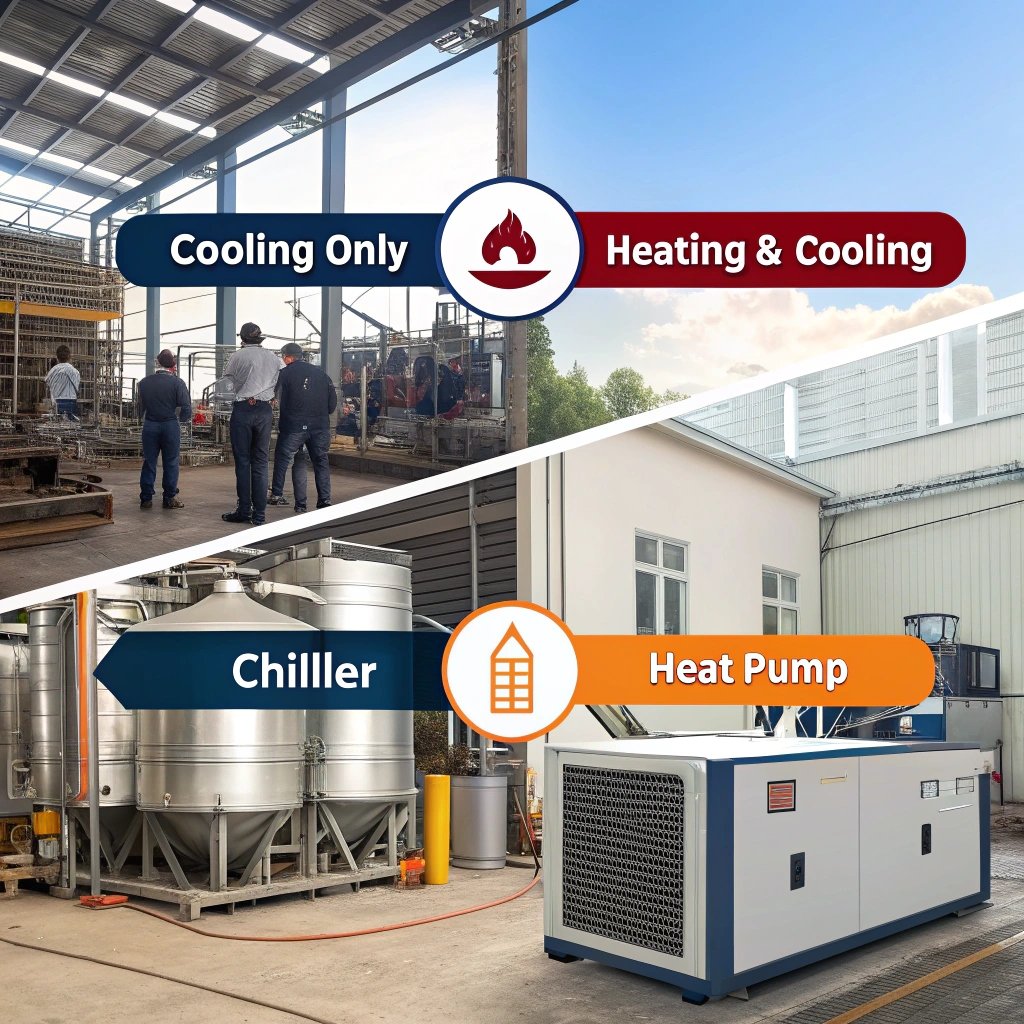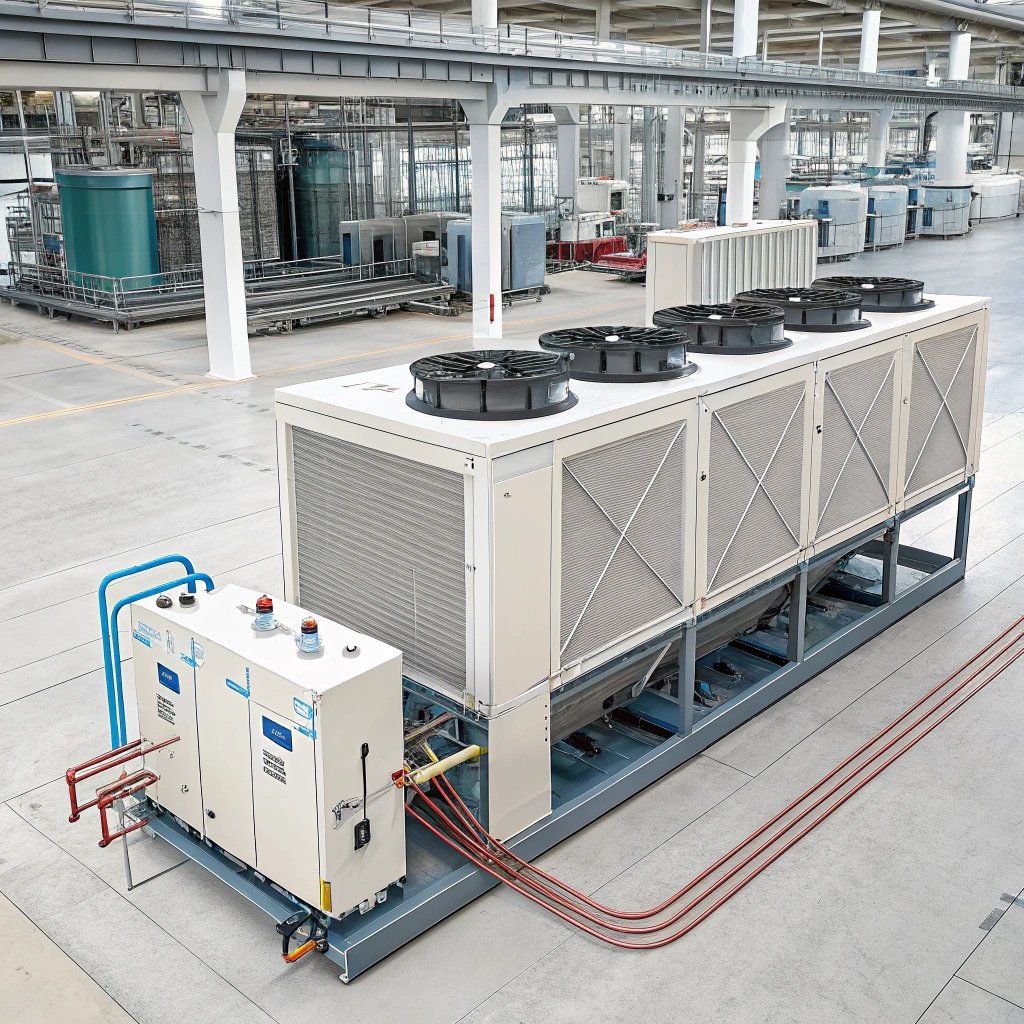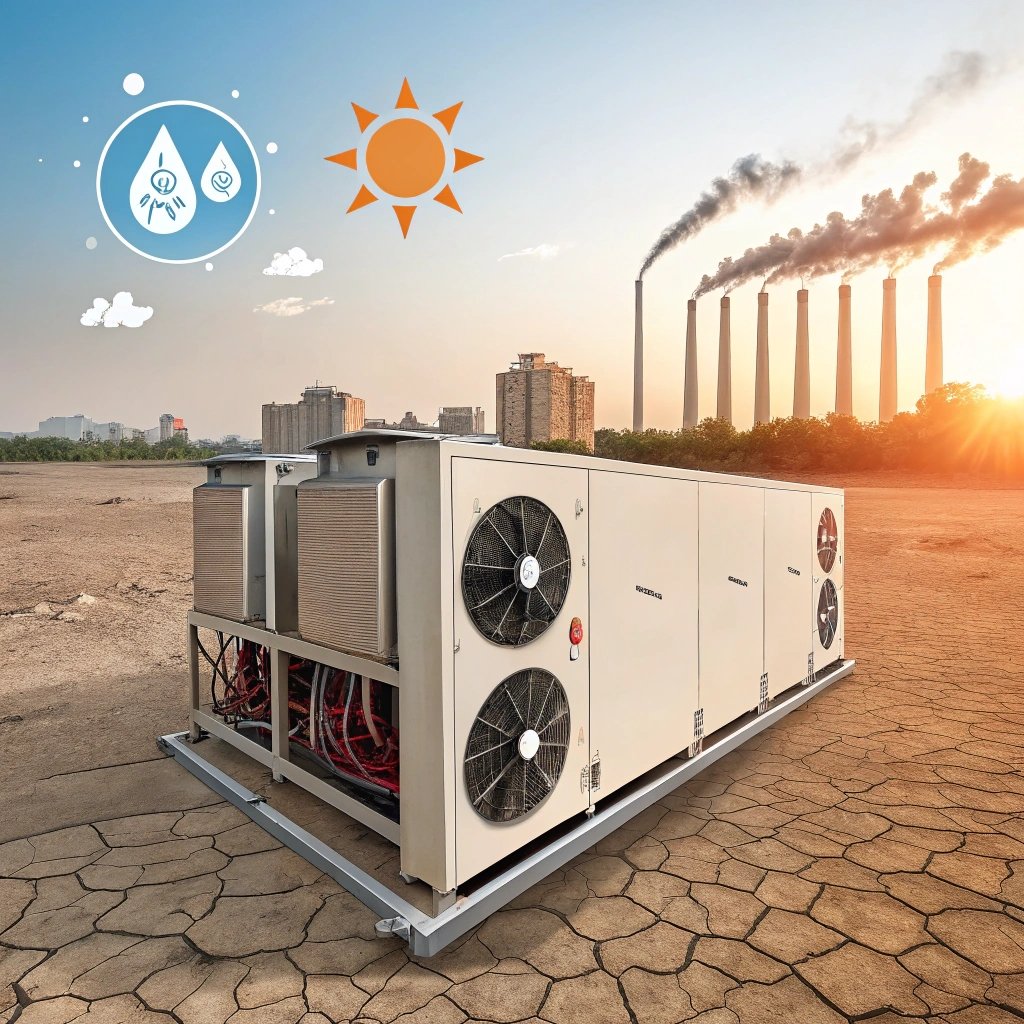What is the difference between a chiller and a heat pump?

leading paragraph:
When it comes to temperature regulation systems, the terms "chiller" and "heat pump" often come up. But do you know the key differences between the two?
featured Paragraph:
Chillers and heat pumps serve different purposes in heating and cooling systems. While both transfer heat, chillers cool the air, and heat pumps provide both heating and cooling by reversing the heat flow.
Transition Paragraph:
Though both systems might seem similar, their working principles and applications are distinctly different. Let's dive deeper into each of them to see how they operate and what makes them unique.
What is a Chiller?
leading paragraph:
Do you know how your office stays cool on a hot summer day? It's probably thanks to a chiller. But what exactly is it?
featured Paragraph:
A chiller cools air or liquid to lower temperatures. It works by removing heat from water or other fluids and expelling it into the surrounding environment, typically using refrigeration technology.

Dive deeper Paragraph:
A chiller is primarily designed for industrial and commercial cooling purposes. In industries like pharmaceuticals, chemicals, and even in air conditioning systems for large buildings, chillers are essential.
The process begins when warm fluid (like water) enters the chiller. The chiller uses a refrigeration cycle, which involves refrigerants that absorb heat. This heat is then removed by a condenser and released outside, leaving the water or air cooler.
How Chillers Work:
- Compressor: The compressor pressurizes the refrigerant gas.
- Condenser: The refrigerant releases heat, changing from gas to liquid.
- Expansion Valve: This lowers the refrigerant's pressure.
- Evaporator: The refrigerant absorbs heat from the air or water, completing the cooling cycle.
Chillers are highly effective at maintaining consistent temperatures, making them ideal for cooling machines, laboratories, and even large-scale HVAC systems. These machines do not provide heating capabilities and are solely focused on reducing temperatures.
What is a Heat Pump?
leading paragraph:
On the other hand, a heat pump can both heat and cool your space. But how exactly does it work?
featured Paragraph:
A heat pump is a versatile system that can either heat or cool your space by transferring heat. It can reverse its cycle, making it efficient for year-round temperature control.

Dive deeper Paragraph:
Unlike a chiller, a heat pump does not just focus on cooling. It is designed to be a dual-purpose unit, meaning it can be used to heat in winter and cool in summer. The key difference lies in the reversing valve, which changes the direction of the refrigerant flow, either absorbing heat from the outside to warm up a space or removing heat to cool it down.
In the cooling mode, a heat pump works similarly to a chiller by removing heat from the indoor air and expelling it outside. However, in heating mode, it extracts heat from the outside air (even in cold weather) and transfers it indoors to warm up the space.
How Heat Pumps Work:
- Compressor: As with a chiller, the compressor pressurizes the refrigerant.
- Condenser: The refrigerant releases its heat, warming up the air.
- Evaporator: This part collects heat from the outside air and absorbs it, whether cooling or heating.
- Reversing Valve: This is what sets a heat pump apart from a chiller—it reverses the refrigerant flow to either heat or cool.
Heat pumps are known for being energy-efficient. They can transfer heat with less energy than traditional heating methods, like electric heaters or furnaces. This makes them particularly popular in residential homes, office spaces, and some light industrial applications.
Chiller vs Heat Pump: Key Differences
leading paragraph:
Now that we know how each system works, it's time to compare them directly. What makes a chiller different from a heat pump?
featured Paragraph:
The major difference lies in functionality. A chiller is used solely for cooling, while a heat pump can do both—heating and cooling—by reversing the direction of heat flow.
| Feature | Chiller | Heat Pump |
|---|---|---|
| Functionality | Cools only | Heats and cools |
| Primary Use | Industrial, commercial cooling | Residential and commercial heating and cooling |
| Efficiency in Winter | Not suitable for heating | Can heat spaces, even in winter |
| Initial Cost | Often cheaper upfront | More expensive upfront due to dual functionality |
| Energy Efficiency | High in cooling, low in heating | Very energy-efficient for both heating and cooling |
Dive deeper Paragraph:
In addition to functionality, chillers and heat pumps differ in their energy efficiency, initial costs, and maintenance needs. Chillers are best for applications that require constant cooling, like manufacturing processes or air conditioning in large buildings. On the other hand, heat pumps are ideal for environments where both heating and cooling are needed. In climates where temperatures vary widely, heat pumps provide a cost-effective and energy-efficient solution.
While chillers can offer more direct cooling power, heat pumps are more versatile and can save on long-term energy costs by using less energy to heat spaces. The decision between a chiller and a heat pump ultimately depends on the specific needs of the user, including space requirements, climate conditions, and the type of application.
Conclusion
Both chillers and heat pumps have their place in temperature regulation systems. A chiller is focused solely on cooling, while a heat pump provides both heating and cooling, offering more versatility for a range of applications.
Insights:
Understanding the core differences between chillers and heat pumps can help businesses make informed decisions on what system best fits their needs. Whether cooling or heating, the right choice will depend on the climate, energy efficiency, and long-term usage requirements.




